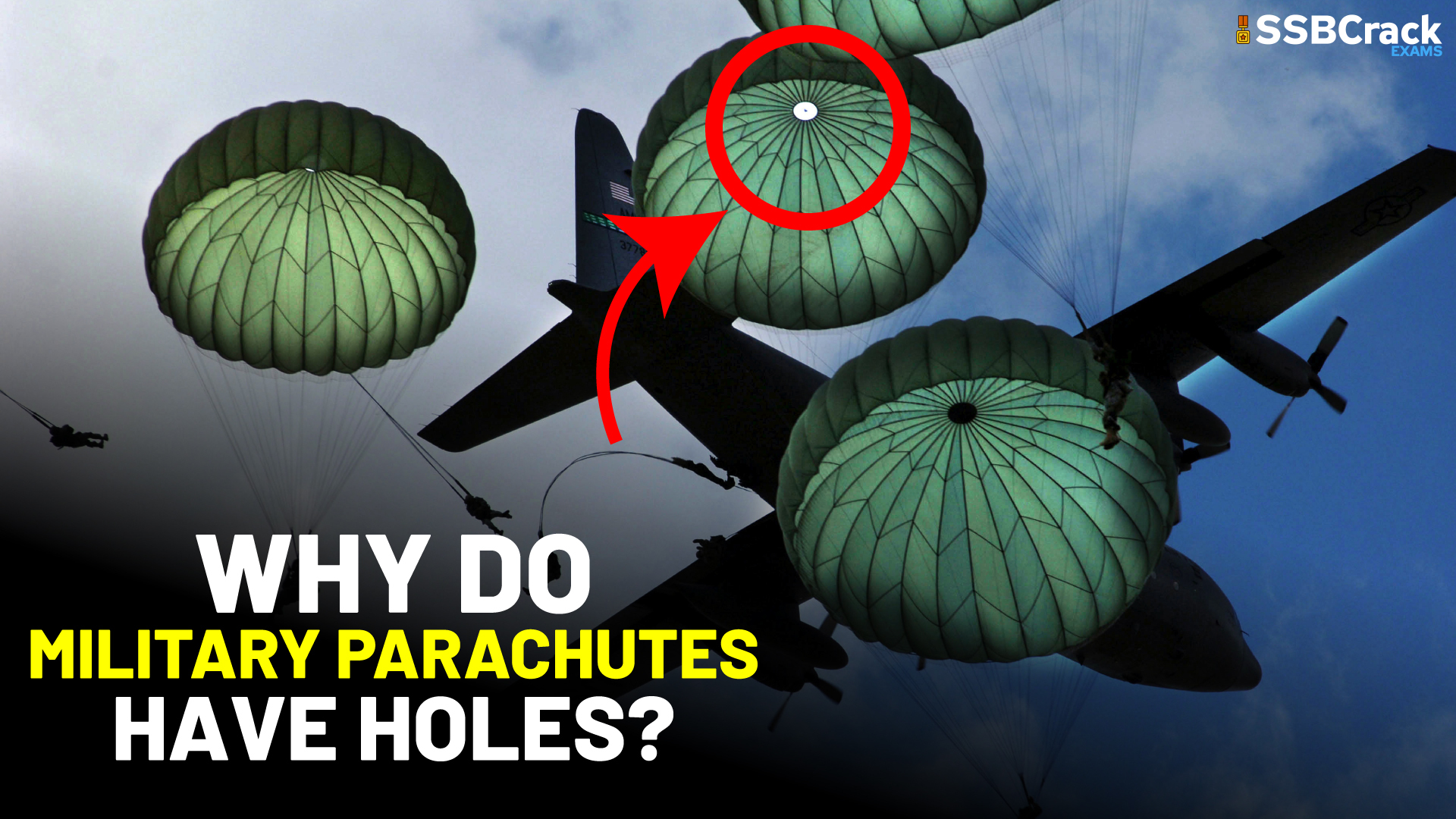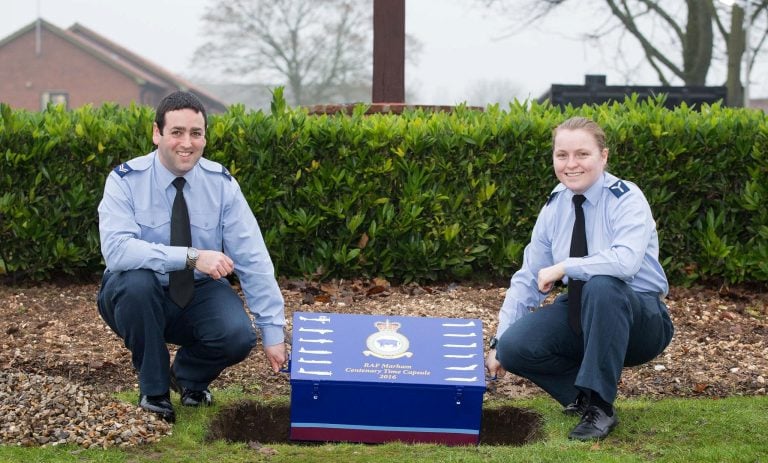Jai Hind future warriors today we are going to answer a question asked by a defence aspirant on our youtube channel: Why Do Parachutes have holes? So we are not only going to answer this query but also discuss how a parachute works but before that let’s have a bit of chat on one of the topics we all loved (Physics), which will help us to understand the concept easily without going into too much technicality.
Basic Physics Involved
From the basics of physics, we know that any object on earth has a gravitational force acting on it which pushes it downwards. So when a person jumps from the airplane(preferably with a parachute) it’s natural that the person’s downfall will be accelerated by the gravitational force. If they were in a vacuum (a space that is completely empty) this would be the only force acting on them. But in a real case scenario(on Earth), we have what you call air molecules(which collectively appear as wind) and they are being slammed by the person as he goes down. The push of the body against those air molecules provides a counter-force. Air resistance acts as a counterforce. The faster gravity accelerates the person, the more air resistance they encounter. The more air resistance they encounter, the slower they fall. Eventually, an equilibrium is reached between the downward acceleration caused by gravity and the upward push caused by air resistance. This is called terminal velocity. It’s the point at which a body will fall no faster, and due to this, there have been cases where a free-falling human without a parachute, survives a long fall to the ground (Caution: Do not try this at home or airforce or wherever).
How Does A Parachute Work
The parachute spreads out over a huge area, causing a falling person to displace much more air as they fall. Since more air molecules are being shoved down by the fabric of the parachute, the parachute and the person attached to it get pushed upwards in return.

The equilibrium of terminal velocity is once again reached, but this time it’s a velocity that’s survivable. All because of the drag (air resistance: that is the force applied against the air molecules) of the parachute.
Why Do Then Parachutes Have Holes
According to the earlier paragraph, drag is very important (to slow down the fall), and thus as much air can be passed down is to be given importance then why have a hole that will allow more air to pass above it through thus much more force by the air, going against the logic.
The holes let air pass through and continue their way without slowing down the jumper. But the main role is to maintain the stability of the jumper. A simple example is what happens when you dry out your clothes in the open when the heavy wind is blowing? Clothes swing like anything even if you use a cliff, that is they are not stable. So if the wind speed is very high then the jumper will keep getting inclined towards the direction wind is blowing.
In short, the hole is there for stability reasons, to stop the parachute from flapping erratically and collapsing. Allowing air through doesn’t technically make you fall more slowly, but it makes the parachute work as intended and even lets the jumper decide the direction rather than the wind.
Conclusion
Hope this post was informative for you! For more such posts related to defence exams and SSB Interview stay tuned.
Also Read:
- HALO And HAHO Jumps By The Paratroopers [Explained]
- How To Earn PARA WING At Paratroopers Training School
- All About Shatrujeet Brigade (50th Parachute Brigade)
- All About Parachute Regiment Training Center (PRTC)

















